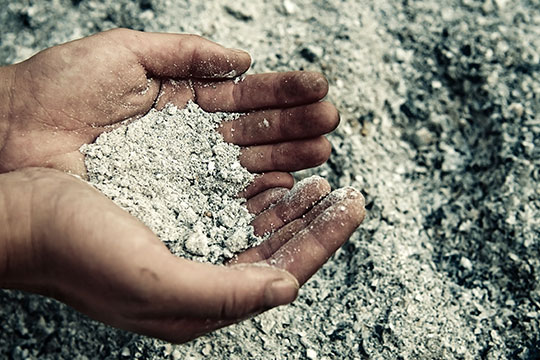Chukat
Series:

Numbers 19:1-22:1
This week's Torah portion contains one of the least understood passages in all of the Scriptures. In the beginning of our portion we have the instructions for the parah adumah—the red heifer—whose ashes are mixed with water to create the singular source of ritual purity for specific conditions described within the Torah. For example, it is only by the water mixed with the ashes of the red heifer that corpse contamination could be negated.
One of the mysteries about the red heifer is how purification through its ashes works. The cow is burnt completely along with cedar wood, hyssop and crimson wool. Then the ashes are gathered up and a small amount is mixed with a large volume of water. Now, by sprinkling this mixture on someone who is considered to have contracted the highest level of ritual impurity, it somehow has the power to transform the status of that person. How does it work? No one knows. That is why this ritual is called a chok, a decree or ordinance. It is a command that seems to make no sense to our human minds.
More puzzling, however, is the question of how coming into contact with these ashes makes a ritually pure person become impure. Everyone who comes in contact with the ashes—the priest who oversees the burning, the one who burned the animal, and the one who collects the ashes—becomes impure. This defies human reasoning. And yet the solution to the problem of one who has become defiled through the ashes of the red heifer is an immersion in water. Water, therefore, is a common denominator in transmitting ritual purity. However, we have an example of when water can be the opposite. It can also be a source of ritual impurity:
A spring or a cistern holding water shall be clean, but whoever touches a carcass in them shall be unclean. And if any part of their carcass falls upon any seed grain that is to be sown, it is clean, but if water is put on the seed and any part of their carcass falls on it, it is unclean to you. (Leviticus 11:36-38)
Normally, water is the agency through which ritual purity is affected. However, in this example ritual impurity is not transmitted unless water is involved. This seems strange as well. How do these things work? We may never know. However, we see another example of this seemingly counter-intuitive series of reversals in the Apostolic Scriptures.
Yeshua came to this earth in order to bring redemption to all of humanity. However, many among the spiritual leaders of Israel rejected him. How can this be? Were they hard-hearted, blind or uneducated in the Scriptures? Why was Yeshua a stumbling block for some, but not for others? Let's ask this question: Why do some medicines make one person well and another sick? It is the same medicine. When it is given to one who is ill, it can aid him in his recovery. But when given to a person who is well, it has the potential to cause serious problems.
Yeshua functioned like the red heifer. He himself said that he did not come for those who were well, but for those who were sick and needing a physician (Mark 2:17). His mission was not to the righteous, but to the sinner. Thus, contact with the living Messiah was a source of cleansing for the sinner, but it was also a source of contamination for the righteous. Just as we cannot explain the mechanics of how the ashes of the red heifer work, neither can we satisfactorily explain how contact with Yeshua transforms a sinner or a saint. We do know, however, that once we have an encounter with him, we will never be the same.








